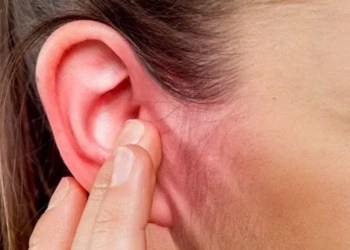In summer, caterpillars are particularly active. Generally, they do not pose a threat to humans, but accidental contact with these insects can lead to itching, sharp pain, and in rare cases, anaphylaxis. Most rashes caused by caterpillars will resolve on their own.
What is a Caterpillar Rash?
1. Some Caterpillar Species to Watch Out For
While there are nearly 165,000 different species of caterpillars worldwide, only about 150 types can be harmful to humans. Here are some caterpillar species to be cautious of due to their potential dangers:
Lonomia obliqua Caterpillar

The hairs on the Lonomia obliqua caterpillar’s horns contain venom that causes irritation, swelling, and painful rashes (Image: ST)
The Lonomia obliqua caterpillar is brightly colored and has a pair of fleshy horns at both ends of its body, with a green back and dots in the middle. The hairs on its horns contain venom that causes irritation, swelling, and sharp rashes.
Blue Caterpillar
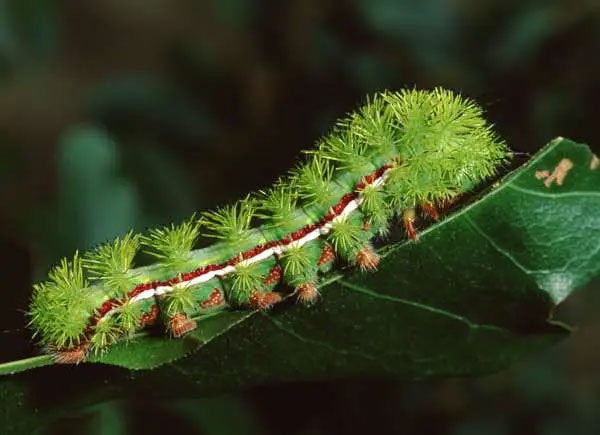
Blue Caterpillar. (Image: ST).
This caterpillar has a green body covered with venomous spines that have black tips. Because of its leaf-like green color, it can be accidentally brushed against, resulting in painful stings.
Rose Caterpillar
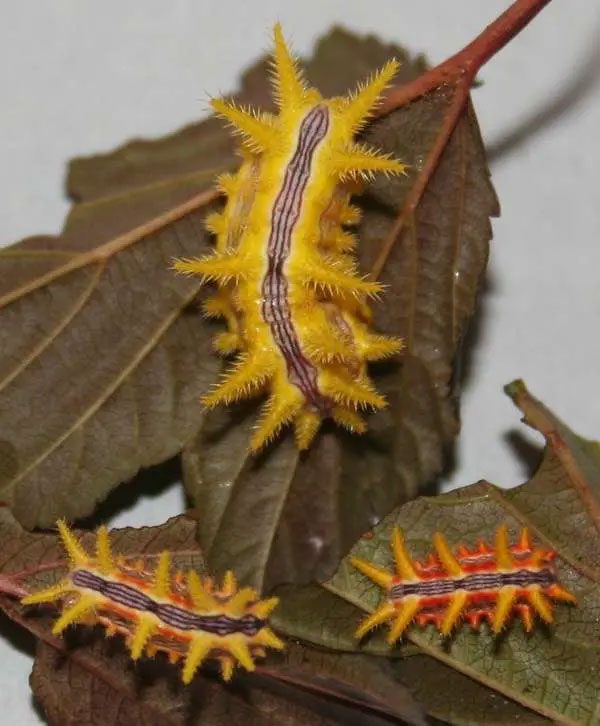
The colorful Rose Caterpillar contains venom. (Image: ST).
Rose caterpillars prefer to feed on rose leaves (hence their name), as well as peach, apple, cherry, oak, poplar, maple, and laurel trees. Their strange appearance may attract attention, but it is best to stay away from these horned, striped, and brightly colored caterpillars.
They are often hard to spot, and their bright colors serve as a warning of the venom contained within.
Buck Moth Caterpillar
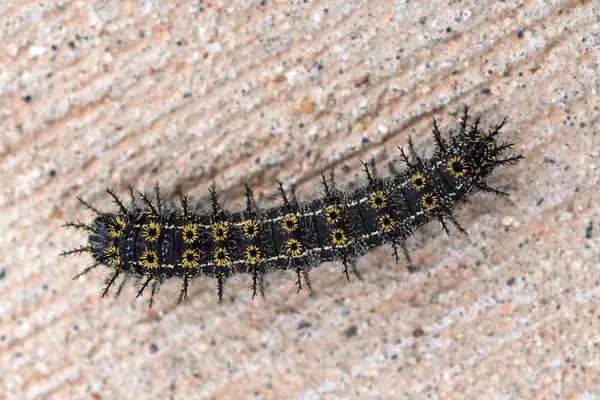
The spines of the Buck Moth caterpillar can cause red rashes and stinging. (Image: ST).
This dark-colored caterpillar is covered with clusters of venomous spines that cause red rashes and stinging sensations. They emerge in the spring and can easily be found on and around oak trees.
White Flannel Moth Caterpillar

White Flannel Moth Caterpillar. (Image: ST).
The White Flannel Moth caterpillar has black, yellow, and red colors with long tufts of hair growing from its yellow bumps. The long black hairs are not stinging, but the short hairs at the base of the tufts can sting and harm the skin upon contact.
2. Symptoms of Caterpillar Stings
Reactions to caterpillar stings are usually mild. Compared to insect bites, caterpillar stings are often considered more bothersome than mosquito bites but not as serious as wasp stings.
The fine hairs on caterpillars can cause rashes. These tiny hairs are known as urticating hairs. In some individuals, these hairs can trigger an allergic reaction upon contact with the skin.
Symptoms from caterpillar stings can last from a few hours to a few days and may include:
- Redness
- Itching
- Swelling
- Bumps.
Severe allergic reactions, including difficulty breathing and swallowing, can occur if you touch your eyes or mouth after coming into contact with a caterpillar.
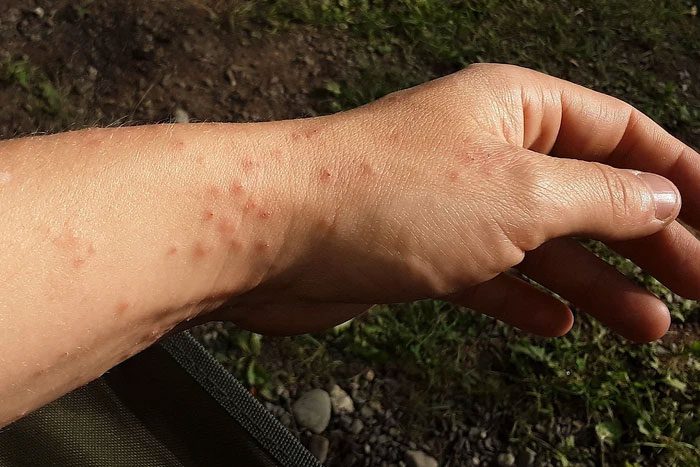
Common symptoms from caterpillar exposure include rashes. (Image: ST).
While rare, in some cases, exposure to caterpillar venom can cause anaphylactic shock. This can lead to severe allergic symptoms such as:
- Low blood pressure
- Rashes
- Changes in mental status
- Severe bronchospasm
- Cardiopulmonary shock
3. How to Diagnose
Caterpillar rashes can easily be misdiagnosed as other dermatitis conditions such as flea bites, mosquito bites, scabies, erythema, contact dermatitis, etc., leading to improper treatment.
There are no specific tests to diagnose a caterpillar rash. However, it can be based on a few factors such as:
- Considering the environment where the person works or plays…
- Checking if there are caterpillar hairs on the patient’s skin
4. First Aid for Caterpillar Stings
When stung by a caterpillar, to avoid or minimize the severe effects of the rash, individuals should:
- Remove any toxic hairs from your skin. You can use duct tape to remove these hairs. Gently press the sticky side onto the affected area and lift to pull the hairs out.
- Wash the affected skin with soap and water
- Apply an ice pack to reduce swelling and pain
- Make a paste using baking soda and water and apply it to the affected area to reduce itching. Hydrocortisone cream can also be used.
- Take oral antihistamines if the reaction to the sting worsens.
If symptoms do not improve despite these steps, or if the skin becomes swollen or breathing difficulties occur, you should go to the hospital for medical advice.

When stung by a caterpillar, individuals should remove toxic hairs from the skin and wash the affected area with soap. (Image: ST).
5. How to Prevent Caterpillar Rashes
In general, we often accidentally get stung by caterpillars. While it may not be possible to completely prevent this, some measures can minimize the risk of caterpillar rashes:
- When going outdoors, especially in areas with many trees, such as gardening or climbing trees, individuals should wear protective clothing. After returning home, change clothes and shower.
- Avoid playing with or touching caterpillars, even if they are dead, as their hairs may still contain venom and cause harm.
- Close windows and doors and clean air conditioning units to prevent caterpillar hairs from dispersing in the air and causing allergies.
- Avoid drying clothes in areas with dense bushes or trees.
Caterpillar Rain Chaos in China and the Surprising Truth
Terrifying Giant Caterpillar Webs Spread Across Parks in England









































